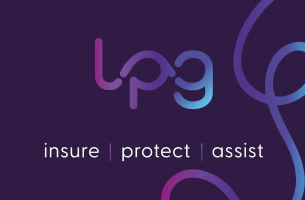
Hannah Stringer, Head of Marketing at Moneypenny
By Hannah Stringer, Head of Marketing at Legal Futures Associate Moneypenny
Defining and agreeing lead qualification criteria is crucial to a successful lead management process—but it’s not a one-off task or a one-way street. To boost conversion rates, qualification criteria should be reviewed regularly to ensure they still reflect business objectives, market conditions, and, perhaps most importantly, customers’ wants and needs.
Here, we explain why revisiting and refining qualification criteria can improve lead conversion and how four tools you probably already use can help.
Why criteria matter
Marketers handle leads from a wide variety of sources (e.g. social media, phone, email campaigns, website visitors and referrals). Gathering data from all these sources can result in inaccurate, incomplete, or repeated data. Different sources may collate data based on varying demographics, such as industry and job role, and provide leads with varying levels of intent.
This is why criteria matter so much. Criteria provide focus. When detailed qualification criteria are in place, sales and marketing teams can focus on the most promising prospects rather than wasting time on less fruitful opportunities. In turn, this aids the allocation of resources, shortens the sales cycle and improves the all-important likelihood of securing a deal and achieving growth.
Criteria also provide an essential benchmark, making it much easier to understand which activities drive valuable leads and inform lead-scoring models. Criteria underpin data-informed decisions so that businesses can be sure qualification criteria are effective.
Four tools that can help
Sales and marketing professionals have access to a vast arsenal of tools—all intended to help identify, nurture, and convert leads – but it’s some of the bread-and-butter marketing tools that can help shape and develop qualification criteria and improve lead conversion straight away. They are:
- Outbound calling. Many businesses use outsourced support to help with outbound calling, refreshing customer data, updating records, and introducing new products and services. This can also help build a greater picture of potential customers and even identify new opportunities. While data gathered during outbound calling can aid lead qualification, it can also be used to establish whether the criteria are still relevant or need refinement.
- Live chat. One of the most cost-effective forms of lead generation and nurturing, live chat is also a favourite for prospects and customers. We support our live chat clients with regular script reviews to ensure the information we capture supports their lead development and qualification criteria. For example, live chat handlers could simply answer the questions prospects put to them, but it would be a much better use of their time if they established a bigger picture view of the prospect and qualified the lead. A firm of solicitors could use live chat to ask a conveyancing prospect more specific questions so they know whether they’re asking for a quote speculatively or because they have found their new home and need to appoint a solicitor now.
Users often share more personal information via live chat than other mediums, so data captured during lead qualification can also help businesses clarify and understand their ICPs. It might reveal new sales opportunities or that greater empathy or support is required at different stages of the buying journey.
- Telephone answering. Like live chat, telephone answering teams and outsourced providers can help shape qualification criteria. Instead of call handlers simply taking messages, they should gather information that makes the caller feel their needs have been understood and covers the qualification criteria including the all-important ‘how did you hear about us’ which by asking over the phone often garners the most accurate response, ready to aid the next step in the sales process.
- Contact forms. While customers often feel that follow-up from contact forms can be a lottery, this medium provides another effective way to qualify leads. Instead of simply gathering names, email addresses, and phone numbers, forms can capture more contextual information, such as where customers are in the buying cycle and what they need to progress their enquiry. Smart forms offer dynamic question paths and integrations that ensure real-time validation of leads and detailed information gathering, which improve engagement and conversion.
Listening is king
All four of these tools have one thing in common—they provide the means to listen to prospects and customers. This helps marketers qualify opportunities and learn what matters most to their target market.
To improve lead quality and conversion, lead qualification should be prioritised. Take the time to periodically review criteria and focus on identifying high-value leads rather than just increasing numbers. Don’t forget to check that all marketing touchpoints also support you in reaching that goal.
Improving lead qualification is discussed in Moneypenny’s latest playbook, The State of Lead Management in 2025. The playbook provides actionable recommendations for marketers to enhance engagement, conversion, and overall marketing effectiveness and can be downloaded here: https://www.moneypenny.com/uk/the-state-of-lead-management/










